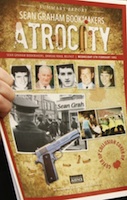
By Jim Gibney (for Irish News)
This is how the former Canadian Supreme Court judge Peter Cory defined collusion: “To pretend ignorance or unawareness of something one ought to morally or officially or legally oppose; to fail to take action against a known wrongdoing or misbehaviour”.
This is how Lord Stevens defined collusion: “The wilful failure to keep records, absence of accountability, withholding of intelligence and evidence, extreme of agents being involved in murder. These serious acts and omissions have meant that people have been killed or seriously injured.”
Lord Stevens also said: “My three inquiries have found all these elements of collusion to be present.”
The British government appointed Cory and Stevens to investigate collusion between the British crown forces and loyalists.
Their definitions are particularly relevant when reading the recent report by the Belfast-based organisation Relatives for Justice (RFJ) into the massacre by the UDA/UFF at the Sean Graham bookmaker’s shop on Belfast’s Ormeau Road 20 years ago on February 5.
The report, Sean Graham Bookmaker’s Atrocity: The Untold Story of Relatives, Victims and Survivors, says: “Bullets do not only travel distance but also through time.”
At the heart of this detailed and thorough report is the deadly story of a consignment of weapons that travelled from South Africa to Belfast in 1987, courtesy of Britain’s intelligence agency MI5 and delivered to loyalist organisations, and a single British army-owned 9mm Browning pistol which travelled through time and hands, including the RUC’s Special Branch, and was used to kill six Catholics and in the attempted murder of 10 others.
The report reveals that the story of the weapons is enmeshed in a web of deceit and duplicity practised by the agents of the state the British crown forces, the RUC and the prosecution service - whose job it is to protect citizens.
The RFJ report is a shocking and at times an incredible account of the extent of collusion between Britain’s armed forces and one loyalist death squad operating in south Belfast which had a licence to kill Catholics.
Shortly before the attack on the Sean Graham shop an unmarked RUC vehicle logged the car carrying three well-known loyalists on their way to attack the bookmaker’s. For whatever reason they failed to stop the car.
Twenty-five witnesses provided accounts to the RUC accurately describing those involved in the killings.
The RUC/prosecution service failed abysmally to arrest in some instances or prosecute in others.
The loyalist who bought the car used in the attack was ‘confidently’ identified by the person who sold him the car. The loyalist was not even charged.
A second loyalist involved in buying this car was linked to it through his fingerprints on a bidding slip at the auction. He was not arrested for more than four months. He was never charged either.
An eyewitness identified one of the gunmen in an ID parade. The RUC refused to accept his evidence.
Two witnesses independently identified the driver of the car used in the attack. The RUC ignored their accounts.
Although a blood sample from a jacket belonging to one of the suspects was tested against the deceased it was not tested against blood samples of the wounded.
Fibres taken from both getaway cars were found on clothes belonging to two loyalist suspects. The forensic lab dismissed this evidence as “of no use”.
Hours after the killings a car used as a second getaway car was stopped on two separate occasions by the RUC.
Three known loyalists and suspects were passengers. They were not arrested.
Stevens discovered that the RUC Special Branch had the 9mm Browning pistol used in the attack secure in their possession. Special Branch handed it back to the UDA/UFF.
Both loyalist agents involved with this weapon took part in the 1989 killing of Pat Finucane.
The Historical Enquiries Team (HET) claimed police interview notes of those arrested with this gun had been “disposed of”.
These notes were subsequently obtained by Kevin Winters solicitors.
Two senior RUC officers who investigated the atrocity refused to assist the HET review of the case.
The families of those killed and injured want the new director of the north’s prosecution service to conduct a fresh review of all the available evidence.
It is the least they are entitled to.
![[Irish Republican News]](https://republican-news.org/graphics/title_gifs/rn.gif)
![[Irish Republican News]](https://republican-news.org/graphics/title_gifs/harp.gif)

